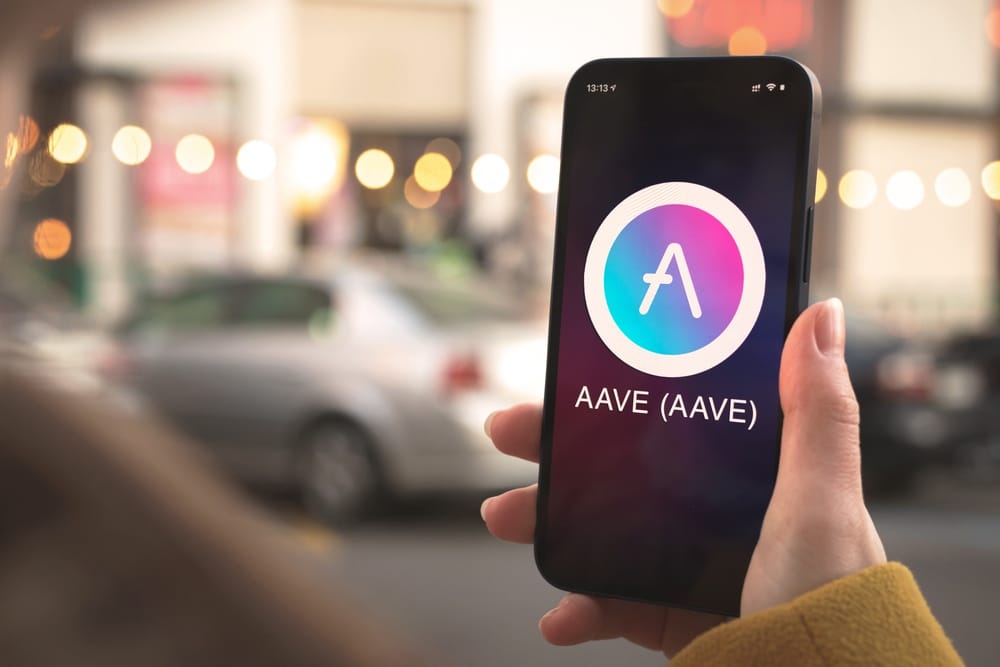Aave Companies is unveiling its decentralized GHO stablecoin as it targets to facilitate market efficiency and accessibility to the users. The firm revealed Aave DAO voting to allow the launching of the GHO stablecoin it has been developing since 2022.
In its recent press release, Aave confirmed the advanced stage of introducing the new decentralized stablecoin. It added that the GHO is native to the Aave protocol running on the Ethereum mainnet.
Aave Decentralized Stablecoin to Deliver Improved User Transparency
The decentralized stablecoin utilizes a unique design to deliver increased user transparency. The minting will involve various collateral assets users hold on the Aaver Protocol. Aave admitted that the diversity of assets will enable Aave to guarantee more flexibility to the users.
The press release indicated that Aave had established pools from which the users could access 30 Ethereum-based tokens. The pools feature other stablecoins, including Tether (USDT) and Circle’s USD Coin (USDC). Besides, the Aave provides pools comprising real-world assets, including real estate, that users can tokenize for acquisition or hold as collateral.
The press release considered the stablecoin an entirely digital token drawing value from the peg to a defined fiat currency. Also, the stablecoin can involve a digital token whose value is pegged to another asset.
GHO Stablecoin Targets Bringing Accessibility to the Protocol’s Ecosystem
Aave reiterated that issuing the stablecoin would bring accessibility to the users within the protocol’s ecosystem. Doing so would help lower costs and guarantee an efficient market.
Launching GHO stablecoin arose through a June 2022 proposal submitted to Aave DAO. The community’s approval allowed Aave to deploy the GHO stablecoin in February to the Ethereum Testnet. The network allowed the developers to adjust the protocol before its deployment.
GHO features a unique design from other stablecoin peers, such as the DAI issued by MakerDAO. The variation arises in how users can mint the GHO using the deposited collateral. It differs from DAI, where users should separate the vaults relative to the asset they intend to use for minting. GHO design accommodates various collateral assets that users can deposit in a single transaction.
Aave DAO Involvement in Safeguarding GHO Decentralized Nature
GHO stablecoin would retain the decentralized nature with Aave’s DAO in adjusting the interest rates. Also, Aave’s DAO would still set mint caps and govern users permitted to mint GHO relative to satisfying the predetermined conditions.
The press release indicated that users identified as facilitators will enable the minting. The enablers involve users who complete the approval process vetted by Aave DAO to secure the status. The facilitator’s capability varies with the class level. In particular, the facilitator’s capability determines the GHO amount to mint and the extent they could offer redemptions between the assets and stablecoin.
Aave restated its plans to launch the GHO stablecoin on Ethereum’s mainnet. Nonetheless, the company admits it would consider a multichain plan to present for approval from the Aave DAO community. Aave was noncommittal on the specifics of future multichain plans.
At Tokenhell, we help over 5,000 crypto companies amplify their content reach—and you can join them! For inquiries, reach out to us at info@tokenhell.com. Please remember, cryptocurrencies are highly volatile assets. Always conduct thorough research before making any investment decisions. Some content on this website, including posts under Crypto Cable, Sponsored Articles, and Press Releases, is provided by guest contributors or paid sponsors. The views expressed in these posts do not necessarily represent the opinions of Tokenhell. We are not responsible for the accuracy, quality, or reliability of any third-party content, advertisements, products, or banners featured on this site. For more details, please review our full terms and conditions / disclaimer.

